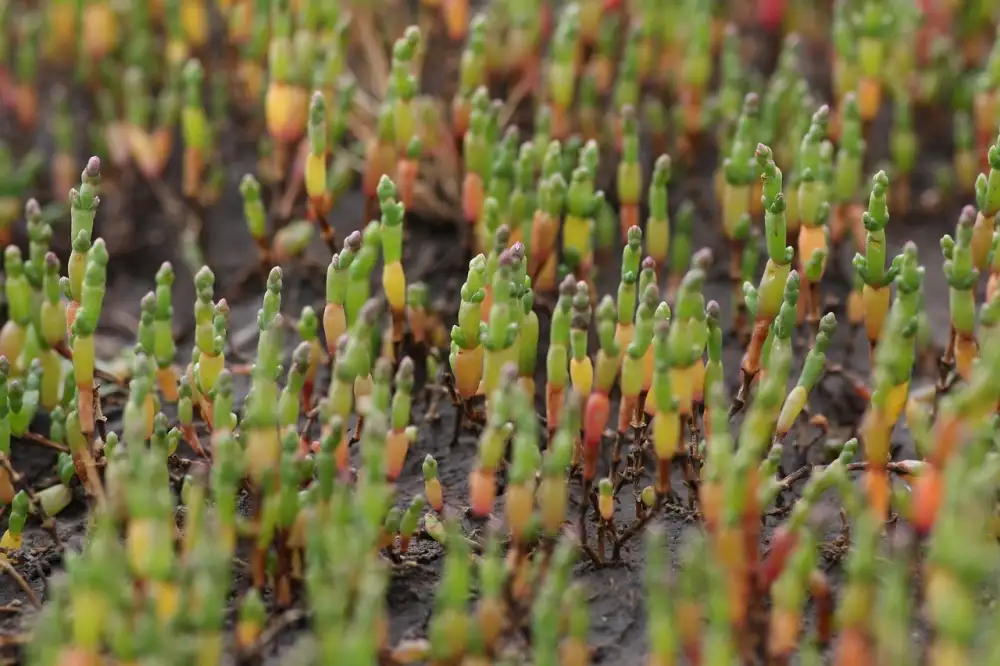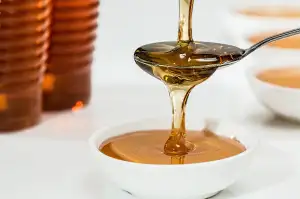Discover Delicious Samphire Recipes: Elevate Your Culinary Creations with this Unique Edible Plant

Samphire, also known as sea asparagus or sea beans, is a unique edible plant that grows in coastal regions around the world. It is typically found along shorelines, cliffs, and salt marshes. Samphire has been used in culinary traditions for centuries, with its salty and crunchy texture making it a popular ingredient in seafood dishes and salads. Its distinct flavor profile adds a refreshing and briny element to various recipes, making it a sought-after ingredient among chefs and food enthusiasts alike.
Health Benefits of Samphire:
Samphire is not only a flavorful addition to dishes but also packs a nutritional punch. This unique edible plant is rich in vitamins A, C, and E, as well as minerals like calcium, iron, and magnesium. Consuming samphire can help boost immunity, improve skin health, and support bone strength. Its high fiber content aids digestion and promotes gut health. Additionally, samphire is low in calories and fat, making it a healthy choice for those looking to maintain a balanced diet. Incorporating samphire into your meals can be a delicious way to enhance both the taste and nutritional value of your dishes.
Popular Samphire Recipes:
1. Grilled samphire with lemon and garlic:
- Toss cleaned samphire with olive oil, minced garlic, and a squeeze of fresh lemon juice.
- Grill over medium heat for 2-3 minutes until tender-crisp.
- Season with salt and pepper before serving as a flavorful side dish.
2. Samphire salad with cherry tomatoes and feta cheese:
- Blanch samphire in boiling water for 1 minute, then rinse under cold water and pat dry.
- Combine with halved cherry tomatoes, crumbled feta cheese, and a drizzle of balsamic vinaigrette.
- Serve chilled for a refreshing and nutritious salad option.
3. Stir-fried samphire with ginger and soy sauce:
- Heat oil in a wok or skillet, add sliced ginger, and stir-fry until fragrant.
- Add cleaned samphire and continue to stir-fry for 2-3 minutes.
- Finish by drizzling soy sauce over the dish and toss to combine flavors before serving hot.
These recipes showcase the versatility of samphire in various culinary applications, from simple grilling to vibrant salads and savory stir-fries. Experimenting with these dishes can elevate your cooking skills while introducing you to the unique flavors of this coastal plant.
Cooking Tips for Samphire:
When preparing samphire, it is essential to clean it thoroughly by rinsing it under cold water to remove any sand or debris. Trim off any tough ends before cooking. Samphire can be enjoyed raw in salads for a crunchy texture or cooked lightly by blanching or steaming for a more tender bite. Avoid overcooking as it can result in a mushy consistency. The natural salty flavor of samphire pairs well with citrus, garlic, and herbs like dill or parsley. Experiment with different cooking methods such as sautéing, grilling, or pickling to enhance its unique taste profile.
Where to Find Samphire:
Samphire can be found growing along coastal regions in various parts of the world, including Europe, North America, and Asia. It thrives in salty marshes, rocky shorelines, and sandy beaches. In Europe, particularly in countries like England and France, samphire is commonly foraged along the coastlines during the summer months.
For those who prefer to purchase samphire rather than forage for it themselves, this unique edible plant can often be found at specialty grocery stores, farmers' markets, and fishmongers. In North America, samphire is sometimes referred to as "sea asparagus" or "sea beans" and can be sourced from select gourmet food stores or online suppliers.
The seasonality of samphire varies depending on the region. In Europe, samphire is typically at its peak from late spring through early autumn. However, in some areas like Australia, where it is known as "samphire greens," it can be available year-round due to different growing conditions.
Whether you're exploring coastal regions or seeking out specialty food purveyors, incorporating samphire into your culinary creations can add a unique and flavorful twist to your dishes.
**Conclusion:**
In conclusion, samphire is a versatile and flavorful ingredient that can elevate your culinary creations to new heights. Whether you prefer it grilled, in a salad, or stir-fried, samphire offers a unique taste that pairs well with various flavors. Its high nutritional value and numerous health benefits make it not only delicious but also beneficial for your well-being. I encourage you to explore the world of samphire and incorporate this edible plant into your cooking repertoire for a delightful and nutritious dining experience.
Published: 21. 04. 2024
Category: Recipes



